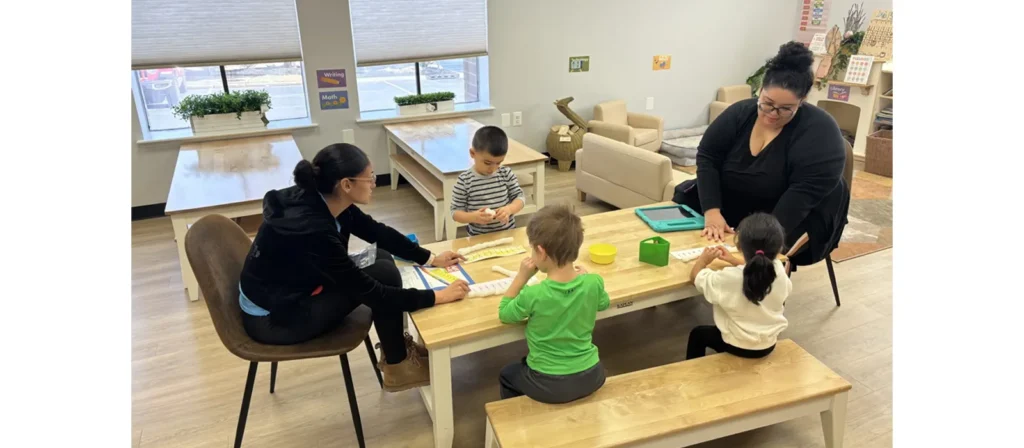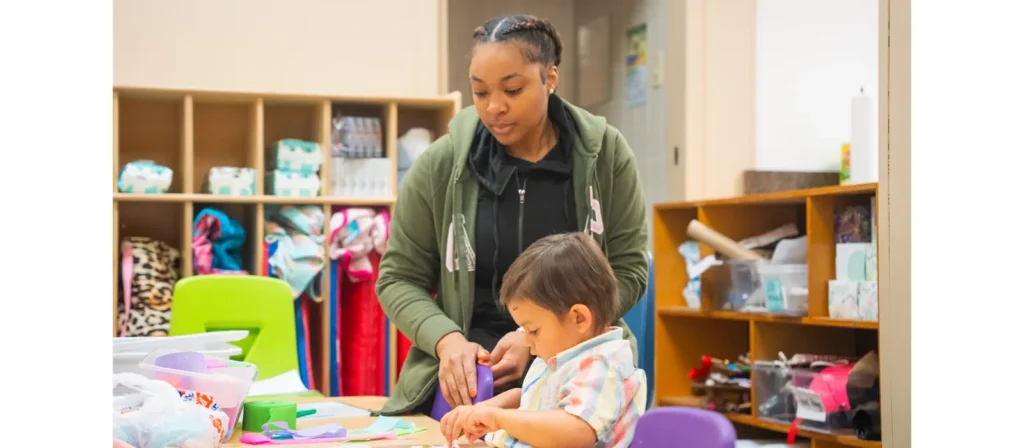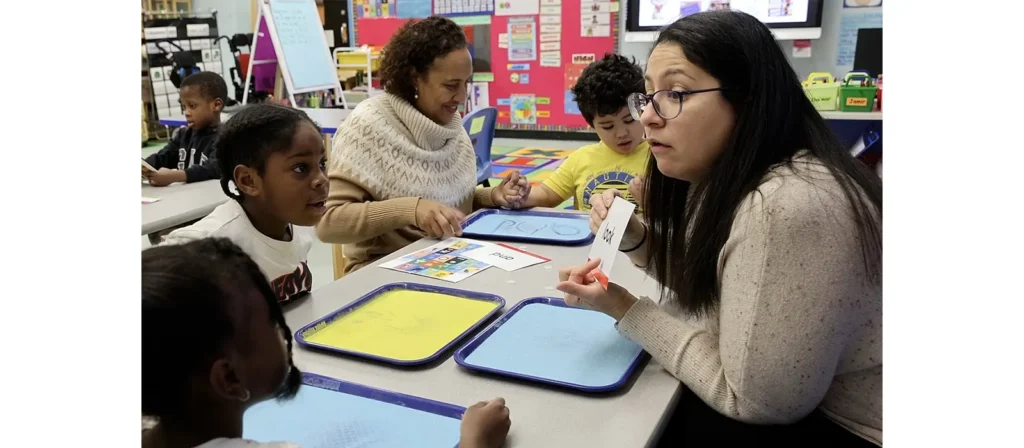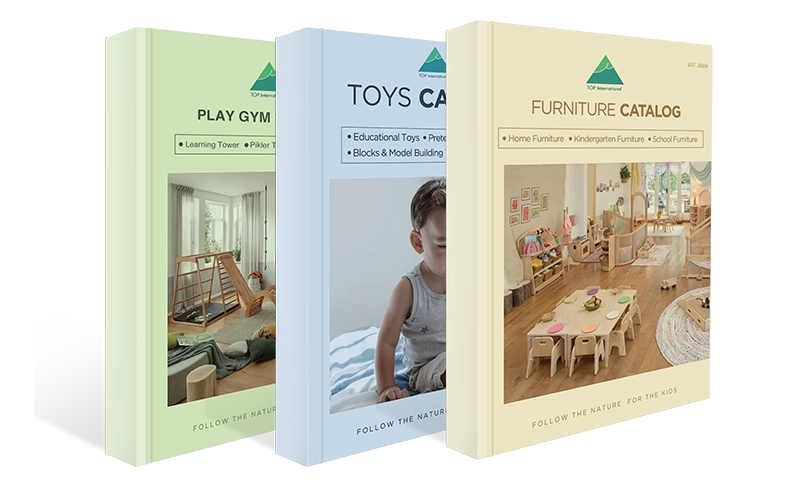In today’s early childhood classrooms, teachers often face the challenge of addressing diverse learning needs while keeping every child engaged and supported. Balancing instruction, behavior management, and individualized attention can be overwhelming for a single educator. This is where Co-Teaching Models become increasingly relevant, as they respond directly to the growing complexity of modern preschool education and the demand for more inclusive teaching practices.
When applied thoughtfully, Co-Teaching Models transform classrooms into environments of shared expertise and collaboration. They allow two educators to bring their strengths together, offering multiple perspectives and teaching styles that enrich every child’s learning experience. Instead of working in isolation, teachers build on each other’s insights, making instruction more flexible, responsive, and engaging. For young learners, this means more opportunities for individual attention, hands-on exploration, and a deeper sense of belonging in an inclusive classroom community.
In the sections that follow, we’ll explore how Co-Teaching Models enhance both teaching quality and classroom dynamics, shaping more collaborative, inclusive, and joyful spaces for children to learn and grow.

What Are Co-Teaching Models?
Co-teaching models describe structured approaches in which two educators share the planning, instruction, and assessment of the same group of children. In early childhood settings, this approach is particularly valuable for creating an inclusive classroom, where children of all abilities and backgrounds learn together. Typically, a general education teacher partners with a specialist such as a special education or language development teacher to ensure that every child receives the right balance of support and challenge.
While the exact setup can vary, co-teaching is more than simply having an extra adult in the room. It is an intentional approach that clarifies who leads which parts of a lesson, how small groups are formed, and how feedback flows between teachers and families. Importantly, co-teaching models fit the natural rhythm of early childhood classrooms, where play, movement, and social interaction drive learning. With shared observation and real-time adjustments, teachers can notice emerging skills, scaffold language, and respond to behaviors in supportive ways.
Benefits of Co-Teaching Models in Early Childhood Education
Implementing collaborative teaching models in early childhood classrooms brings a wide range of educational and developmental advantages. When two educators work collaboratively, they can better address children’s diverse learning needs while creating a supportive and engaging environment. The benefits extend beyond students as they also enrich teachers’ professional growth and improve overall classroom dynamics. In a well-structured co teaching classroom, learning becomes more inclusive and flexible, helping young children thrive both academically and socially.
Enhanced Individualized Support
One of the most significant advantages of co-teaching models in early childhood education is the ability to provide more individualized attention. With two educators teaching in the early childhood classroom, it becomes easier to identify each child’s developmental stage and adjust instruction accordingly. For example, while one teacher leads a group activity, the other can focus on helping children who need additional guidance with fine motor skills, speech development, or social interaction. This balance ensures that every child receives the right level of support and challenge.
Promotion of Inclusive Learning Environments
Collaborative teaching models naturally foster inclusivity. In a co teaching classroom, children with different learning styles, abilities, and backgrounds learn side by side, building empathy and respect for diversity. Co-teaching allows both educators to design lessons that reach all learners, combining differentiated instruction, play-based activities, and peer collaboration. This shared approach helps all children feel valued and capable of contributing to the classroom community.
Improved Teacher Collaboration and Professional Growth
Another benefit of co-teaching is the professional partnership it creates. Teachers collaborate on planning, problem-solving, and reflection, which enhances both their teaching skills and professional satisfaction. Working together encourages creativity, reduces isolation, and helps teachers learn from each other’s strengths. Over time, this collaboration leads to more innovative lessons and consistent growth for both educators and students.
Better Classroom Management and Observation
Two teachers managing a group of young children means more eyes and hands available to maintain a positive learning environment. One teacher can guide the main lesson while the other observes children’s behavior, attention, or engagement levels. These observations allow for immediate adjustments to teaching strategies. The result is a calmer, more organized co teaching classroom where children feel safe, confident, and supported.
Greater Engagement and Learning Outcomes
When two teachers work together, classroom energy and interaction naturally increase. Children benefit from different teaching voices, approaches, and styles, which keep activities dynamic and engaging. Research has shown that young learners respond positively to this variety as it strengthens their attention span, supports memory retention, and improves social-emotional skills. As a result, co-taught preschool classrooms often show higher participation and more meaningful learning experiences.
Co-Teaching Strategies
In early childhood classrooms, co-teaching strategies help teachers collaborate effectively to meet the diverse needs of young learners. Each strategy defines how co-teachers share responsibilities, divide instruction, and engage with children. Choosing the right model depends on class size, learning goals, and the comfort level of both teachers. Below are six commonly used collaborative teaching models that can enhance the effectiveness of a co teaching classroom.

1. Team Teaching
In team teaching, both educators share equal responsibility for teaching the entire class at the same time. They may alternate leading discussions, demonstrate activities together, or add insights as the other explains a concept. This approach allows students to experience two teaching styles and perspectives simultaneously.
ประโยชน์:
- Promotes dynamic interaction and high student engagement
- Models positive collaboration and communication for children
- Combines teachers’ strengths for richer, more flexible instruction
When to Use It:
When both teachers are confident with the content, have similar teaching philosophies, and want to demonstrate teamwork as part of the learning process.
2. Parallel Teaching
Parallel teaching divides the class into two smaller groups, with each teacher delivering the same lesson at the same time. This reduces class size, allowing for more personal interaction and attention. It’s ideal for young learners who benefit from smaller, focused learning environments.
ประโยชน์:
- Lowers the student–teacher ratio for better support
- Encourages participation and frequent questioning
- Allows for easier management of active preschool groups
When to Use It:
When teaching complex or new material that may require closer guidance, or when students need more opportunities to engage directly with the teacher.
3. Station Teaching
In station teaching, the classroom is divided into learning centers, and students rotate through different stations to explore concepts in various ways. Each teacher manages one or more stations while others may be designed for independent or small-group work.
ประโยชน์:
- Encourages movement, hands-on learning, and collaboration
- Supports multiple learning styles and developmental needs
- Keeps children’s attention through varied and short activities
When to Use It:
When teaching themes that lend themselves to multiple learning modalities, such as literacy, science exploration, or sensory play, in the early childhood classroom.
4. Alternative Teaching
In alternative teaching, one educator works with most of the class while the other provides specialized instruction to a small group. The smaller group might focus on reteaching a skill, extending learning for advanced students, or providing individualized support.
ประโยชน์:
- Provides targeted instruction for children needing extra help or enrichment
- Allows flexible grouping based on ability, interest, or progress
- Ensures no child is left behind during key concept development
When to Use It:
When assessment or observation shows certain children need reinforcement, pre-teaching, or enrichment in a specific area.
5. One Teach, One Assist
In this model, one teacher leads the lesson while the other circulates to provide support. The assisting teacher helps individuals who need clarification or behavior guidance, ensuring that all children stay engaged and understand the activity.
ประโยชน์:
- Gives immediate, individualized help without interrupting the lesson
- Improves classroom management and on-task behavior
- Offers new teachers the chance to observe experienced colleagues in action
When to Use It:
During large-group activities or when introducing new routines, especially when some children need additional assistance following directions.
6. One Teach, One Observe
Here, one teacher delivers instruction while the other observes children’s participation, focus, and social interactions. Observation provides valuable data that informs lesson adjustments, groupings, or behavior strategies.
ประโยชน์:
- Helps identify learning patterns and children’s individual needs
- Supports data-driven planning and reflective teaching
- Strengthens assessment in early learning environments
When to Use It:
When teachers need to collect information for assessment, monitor engagement, or evaluate the effectiveness of a new teaching strategy in a co teaching classroom.

Challenges of Co-Teaching in Early Childhood
Although Co-Teaching Models bring significant benefits to early childhood education, their successful implementation can be challenging. Working as a team requires shared commitment, flexibility, and clear communication. Each teacher must balance their unique teaching style while maintaining a unified approach to classroom management and instruction. Recognizing and addressing these challenges early allows teachers to strengthen their collaboration and ensure that children benefit fully from co-taught experiences.
Finding Time for Collaboration
One of the most frequent obstacles to implementing Co-Teaching Models effectively is the lack of shared planning time. Both educators must coordinate lesson plans, prepare materials, and discuss student progress together. In the fast-paced environment of early childhood classrooms, this can be difficult to achieve. Without regular planning, lessons may become disjointed, and instructional responsibilities may fall unevenly. Administrators can support co-teaching by scheduling consistent planning sessions and encouraging teachers to share reflective notes after each class.
Clarifying Roles and Responsibilities
Each Co-Teaching Model relies on clearly defined roles. When teachers are uncertain about who leads, who assists, or how tasks are divided, confusion can disrupt classroom flow. Early discussions about expectations and instructional duties are essential for avoiding imbalance. Whether using team teaching, station teaching, or parallel teaching, both educators should agree on their responsibilities to ensure smooth transitions and equal participation during lessons.
Balancing Different Teaching Styles
A key challenge within Co-Teaching Models arises when teachers have contrasting instructional philosophies or communication methods. For instance, one teacher may favor structured, teacher-led lessons, while the other prefers exploratory, child-centered learning. These differences can be productive when approached with openness and respect. By blending techniques and observing one another, teachers can create a more adaptive and responsive classroom that meets the diverse needs of young learners.
Maintaining Equal Participation
In some classrooms, co-teachers unintentionally fall into unequal patterns where one teacher leads most lessons and the other provides support. This imbalance can reduce collaboration and limit professional growth. Successful Co-Teaching Models encourage rotation of roles and shared leadership. Switching between leading, assisting, and observing ensures that both educators stay actively involved and that students view them as equal authorities.
Communication Barriers
Strong communication is vital for any co-teaching partnership, yet it can be one of the most fragile elements. Misunderstandings, assumptions, or irregular check-ins can lead to frustration and misalignment. To support effective Co-Teaching Models, teams should establish clear communication habits such as short daily check-ins, written lesson summaries, and open feedback sessions. Maintaining transparency fosters trust and keeps both teachers focused on shared goals.
Managing Space, Noise, and Classroom Flow
Early childhood classrooms are lively environments filled with movement, conversation, and sensory exploration. Implementing Co-Teaching Models in these spaces requires careful organization. Teachers must coordinate where they stand, how they divide learning areas, and how transitions between activities are handled. When space is thoughtfully arranged and routines are clearly established, co-teaching becomes smoother and more engaging for both educators and students.

How to Navigate Co-Teaching Teams?
Working effectively as a co-teaching team takes time, communication, and trust. Even when both teachers share a passion for helping children learn, differences in style, pace, or expectations can create challenges. Successful teams understand that strong relationships don’t just happen; they are built through consistent collaboration, open dialogue, and a shared sense of purpose. In a well-functioning co teaching classroom, teamwork becomes the foundation for student success and professional growth.
Build Mutual Trust and Respect
Trust is the cornerstone of every collaborative teaching model. Both teachers must view each other as equals, recognizing that each brings valuable skills and perspectives. One teacher may be more experienced with classroom management, while the other excels at differentiating instruction. Acknowledging each other’s strengths fosters mutual respect and allows for smoother cooperation. When teachers trust one another, they can take risks, share honest feedback, and focus on improving teaching rather than defending personal methods.
Communicate Openly and Frequently
Consistent communication keeps co-teaching partnerships strong. Co-teachers should discuss expectations, goals, and classroom routines from the beginning of the year and revisit them often. Short daily check-ins help keep both teachers aligned, while longer weekly planning sessions provide space to address bigger challenges or adjust strategies. Using shared tools such as lesson templates or digital planners can make coordination easier. Clear communication ensures both teachers feel heard and equally responsible for classroom outcomes.
Set Clear Roles but Stay Flexible
While it’s important to define roles such as who leads, who assists, and who observes, rigid boundaries can limit collaboration. Co-teaching works best when both teachers remain adaptable. For example, a lead teacher might take charge during literacy instruction, while the co-teacher leads small groups during math exploration. Flexibility allows both educators to use their strengths at the right time and supports a balanced, responsive teaching environment.
บทสรุป
In early childhood education, Co-Teaching Models represent more than just instructional techniques; they embody a philosophy of shared responsibility, inclusivity, and professional collaboration. When two teachers plan, teach, and reflect together, they create a learning environment that values every child’s unique abilities and learning pace. A well-implemented co teaching classroom nurtures not only academic skills but also social, emotional, and cognitive development, helping children build confidence and curiosity from their earliest years.
The success of Co-Teaching Models depends on trust, communication, and flexibility. Educators who work as true partners understand that collaboration takes time and effort, yet the results are deeply rewarding. By choosing the most suitable model, whether team teaching, station teaching, or parallel teaching, teachers can adapt their instruction to meet the needs of all learners. Each approach offers opportunities for creativity, differentiation, and shared problem-solving.
Ultimately, co-teaching benefits everyone involved. Students receive more individualized attention and multiple perspectives, while teachers gain professional support and new insights into their own practice. As early childhood programs continue to evolve, the use of collaborative teaching models will remain essential for fostering inclusive, engaging, and equitable classrooms where every learner can succeed.







